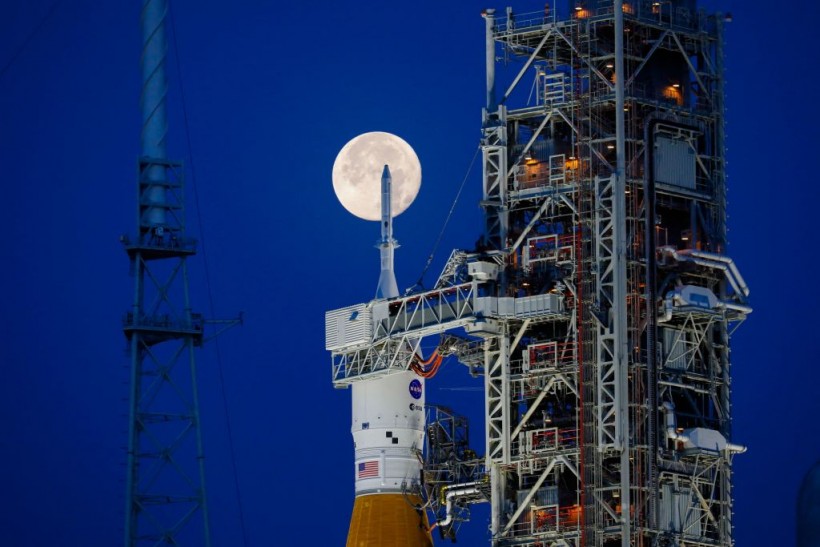NASA will blast off its Space Launch System (SLS) rocket for the first time ever into orbit this Monday at Cape Canaveral in Florida.
The SLS rocket is the most powerful one ever made. Despite multiple setbacks since the project's inception in 2011, it has arrived at the launch pad and is prepared for takeoff. Its 42-day mission, known as Artemis I, marks the start of NASA's attempt to return people to the moon's surface.
New Scientist wrote that the Orion capsule is perched atop the SLS rocket. It will separate from the rocket's core around 8 minutes, 30 seconds after launch, and carry on to circle the moon. Although the capsule may accommodate a crew, it will only be carrying mannequins on its maiden test flight to analyze the forces and radiation the crew would encounter on the voyage.
NASA Artemis 1 Mission to Fly Soon!
The SLS's maiden uncrewed mission, dubbed Artemis 1, is scheduled to take place on Monday, August 29.
The SLS is on schedule to launch, according to all indicators. The rocket was pushed out to Launch Pad 39B at the Kennedy Spaceflight Center in Florida on August 17.
According to the most current assessments obtained by IGN, there is a 70 percent likelihood that the weather will remain good for the two-hour launch window after NASA completed their Flight Readiness Review on the 22nd.
In other words, it could finally be time to light the most giant candle on Earth after ten years of planning and engineering, and here's how you can see it live.

NASAs Artemis I Moon rocket sits at Launch Pad Complex 39B at Kennedy Space Center, in Cape Canaveral, Florida, on June 15, 2022.
ALSO READ: NASA Yeast Mission: Experiments on Artemis 1 to Help Astronauts Survive Cosmic Radiation
How to Watch Launch
NASA will stream live coverage of the launch on August 29 via its website, YouTube channel, and NASA app if you can't attend in person.
There will also be a few other methods to keep up with the objective, The Verge mentioned. The Artemis Real-time Orbit Website (AROW), which NASA will launch on August 28, will allow anyone to follow the mission as it takes place.
From Alexa-enabled devices, you can also get some updates and watch a webcast of the launch. A version of Alexa from Amazon will be flying on the expedition.
What the Artemis I Mission Will Do
According to Mashable, here are the things that Artemis I would do:
The uncrewed mission will demonstrate that the SLS rocket is capable of launching the Orion spacecraft to the moon and into space, where it will ultimately transport humans. If the rocket is successful, it will surpass all other launch vehicles in terms of power.
The performance of Orion will be closely monitored by NASA spacecraft engineers while it travels through space, does many laps around the moon, and ultimately returns to Earth. 42 days will pass during the expedition.
Orion will crash into the Pacific Ocean after leaving Earth's atmosphere. The next mission, Artemis ll, will include astronauts, therefore everything must proceed without incident.
RELATED ARTICLE: NASA's Artemis I Test Flight Making A Giant Leap of Bringing Humans Back to the Moon
Check out more news and information on Space in Science Times.














